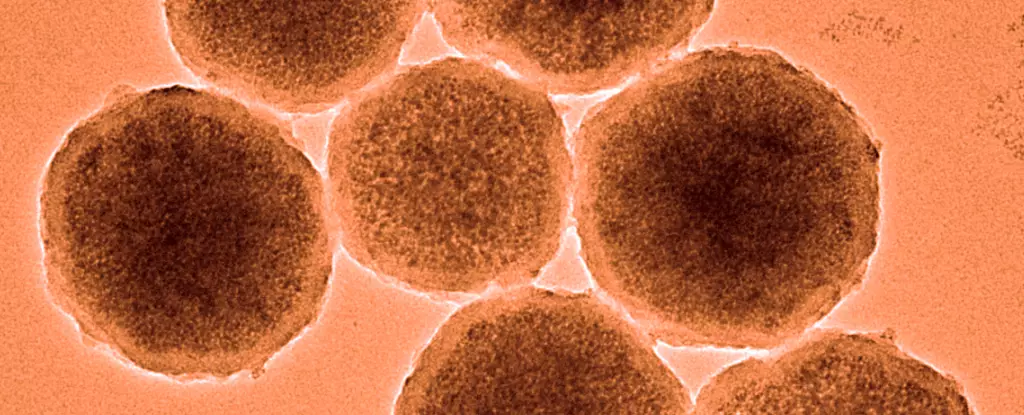In an era where medical innovations are increasingly relying on technology, a groundbreaking development is on the horizon: the application of spherical nanobots that measure slightly larger than a virus. These microscopic entities, designed for precision and efficiency, have the potential to significantly impact the treatment of brain aneurysms, thereby saving countless lives each year. This new wave of nanotechnology, spearheaded by an international consortium of researchers from esteemed institutions such as Shanghai Jiao Tong University and the University of Edinburgh, aims to address critical emergencies by delivering clotting agents directly to the site of vascular weakness.
The innovative design of these nanobots centers around their ability to transport medical agents through the intricate network of blood vessels in the human body. Each nanobot, with an average diameter of just 300 nanometers, comprises a magnetite core that serves as the driving force for navigation within the bloodstream. Encasing this core is a carefully formulated payload of thrombin, a clotting factor essential for managing hemorrhages, surrounded by a heat-sensitive shell that liquefies at a temperature just above that of the human body.
Utilizing external magnetic fields, trained technicians can maneuver these bots through the body’s complex vascular pathways. Upon reaching their designated target—commonly a weakened section of an artery—the organisms are exposed to rapidly alternating magnetic fields that trigger the release of their therapeutic cargo. This intricate process not only facilitates efficient clot formation but also minimizes the risk of complications that might arise from traditional surgical interventions.
Validation of Effectiveness Through Animal Trials
The promising capabilities of these nanobots were highlighted during rigorous trials conducted on animal models. Researchers carefully monitored the device’s ability to induce clotting effectively, assessing its melting thresholds and overall biocompatibility. Remarkably, during these tests, the nanobots successfully delivered thrombin to simulated aneurysms in carotid vessels without inciting adverse inflammatory responses or causing damage to adjacent tissues.
This successful application indicates a pivotal advancement in emergency medicine, particularly for conditions characterized by potential ruptures, such as brain aneurysms—a condition impacting approximately 3% of the global population. While only a fraction of these aneurysms will rupture, the ensuing healthcare crises often lead to catastrophic health implications, including strokes and fatalities. As conventional surgical strategies involve significant risk, the introduction of these nanobiodevices could revolutionize how healthcare professionals manage these dangerous conditions.
Benefits of Nanobots Over Traditional Treatments
The adoption of nanobot technology in medical interventions could herald a new epoch in targeted therapies. By employing these tiny robots, medical professionals can circumvent the complications associated with existing treatments such as clipping or bypassing weakened blood vessels. The safe and non-invasive delivery of clotting agents through nanobots offers a critical advantage; it reduces both patient recovery times and the probability of rejection or inflammatory responses commonly associated with foreign surgical materials.
Moreover, the precision of nanobot delivery stands in stark contrast to traditional drug administration methods. With the capacity to release therapeutic agents directly at the site where they are most needed, these nanobots could optimize treatment efficacy while minimizing systemic side effects often encountered with conventional drug therapies.
Despite the significant strides made in their development, researchers acknowledge that further advancements are necessary before these nanobots can be safely utilized in human patients. Critical challenges remain, particularly regarding the bots’ navigation capabilities within the complexities of the human body and enhancing the magnetic targeting parameters for deeper tissue accessibility.
Nevertheless, the initial proof of concept is encouraging. As investigations advance and more data is gathered, there exists the tantalizing potential for these microscopic paramedics to redefine and enhance current medical practices, offering patients a quicker, safer alternative to address life-threatening conditions such as brain aneurysms. The emergence of magnetically-controlled nanobots holds significant promise for the future of medicine, relentlessly pushing the boundaries of what is possible in therapeutic medical interventions.


Leave a Reply